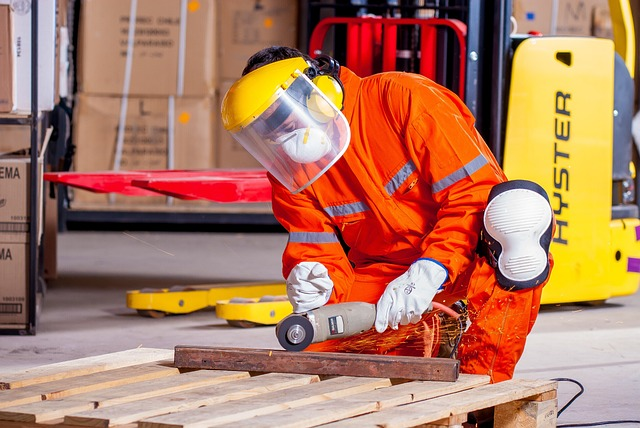The Importance of Strong Structural Design for Homes in Florida’s Hurricane Zone
This post was originally published on this site
Florida, known for its beautiful coastlines and sunny weather, is infamous for its vulnerability to hurricanes. For homeowners in this hurricane-prone region, ensuring a strong structural design is one of the most critical aspects of building or purchasing a home. When a major storm hits, the right design can mean the difference between minor damage and total devastation. Understanding the importance of structural integrity in Florida’s hurricane zone is essential for both safety and long-term investment.
Understanding Florida’s Hurricane Zone
Every year, from June through November, Florida’s residents brace themselves for hurricane season. Due to its geographic location, Florida is one of the most hurricane-vulnerable states in the U.S., with many storms making landfall on its coastlines. High winds, heavy rainfall, and storm surges are all significant risks of these natural disasters. Homes in Florida’s hurricane zone must be designed to withstand these forces.
What Defines Strong Structural Design in Hurricane Zones?
Strong structural design refers to how a home is built to resist the elements, particularly wind, water, and flying debris caused by hurricanes. This often means more than meeting basic building codes in hurricane-prone areas. It requires additional reinforcements, materials, and techniques that increase the building’s resistance to extreme weather conditions.
Homes designed with hurricane resilience in mind typically include features such as reinforced roofs, impact-resistant windows, and strong foundations. These elements work together to create a structure capable of weathering powerful storms.
Reinforced Roofs: The First Line of Defense
The roof of any home is one of its most vulnerable points during a hurricane. Strong winds can easily rip off poorly secured roofs, exposing the entire structure to damage further. In Florida’s hurricane zone, roofs must be designed with special attention to wind resistance. This typically involves using materials that can withstand high wind speeds and reinforcing the attachment points where the roof meets the home’s walls.
Moreover, installing hurricane straps or clips, which secure the roof to the home’s structure, adds an extra layer of protection. This simple addition can drastically reduce the risk of roof failure during a storm.
The Importance of Impact-Resistant Windows
Flying debris is another major hazard during hurricanes, and standard windows are often the first to shatter when debris strikes. Installing impact-resistant windows is a crucial step in hurricane-proofing a home. These windows are designed to withstand the impact of debris flying at high speeds, protecting the home’s interior from wind and rain.
Impact-resistant windows can also help reduce pressure changes inside the home during a storm, which is important for preventing structural failure. By preventing wind from entering the house through broken windows, the chances of a roof collapse or wall blowout are significantly reduced.
Elevated Foundations to Combat Flooding
In addition to wind damage, flooding from storm surges and heavy rains is a major concern in Florida’s hurricane zones. Homes built on or near the coast are particularly vulnerable to this damage. One way to mitigate the risk of flooding is by elevating the home’s foundation. Elevated homes are less likely to be inundated by rising water, which can cause significant structural damage and lead to costly repairs.
Building homes on stilts or raised platforms has become common in coastal areas. Local building codes sometimes require homes to be elevated to a certain height to reduce the risk of flood damage.
Sturdy Wall Construction for Wind Resistance
Designers must build the walls of a home to handle the intense lateral forces from hurricane-force winds. Builders often use reinforced concrete and other strong materials in hurricane-resistant homes. These materials help to create a solid, immovable structure that can withstand high winds without cracking or collapsing.
Additional reinforcements such as steel frames or bracing can strengthen the walls and increase the home’s overall resilience. Combined with a well-secured roof and sturdy foundation, these walls form the backbone of a hurricane-resistant structure.
The Role of Building Codes in Florida
Florida’s strict building codes play a significant role in ensuring that homes in hurricane zones are built to withstand the forces of nature. After Hurricane Andrew in 1992, Florida introduced some of the toughest building regulations in the country, requiring homes to meet specific standards for wind resistance and structural integrity.
These codes mandate impact-resistant windows, reinforced roofs, and elevated foundations in certain areas. While these regulations have helped reduce the damage caused by hurricanes, they also serve as a guide for homeowners and builders looking to ensure their homes are as safe as possible.
Regular Maintenance to Ensure Structural Integrity
Even the strongest homes need regular maintenance to remain in peak condition, especially in Florida’s harsh climate. Over time, the elements can wear down building materials, weakening the structure and leaving it vulnerable to storm damage. Regular inspections, roof repairs, and window maintenance can help ensure a home’s integrity is not compromised.
In particular, checking for loose roof shingles, cracks in the foundation, and wear and tear on impact-resistant windows is essential. These small maintenance tasks can prevent larger issues from arising during hurricane season.
Retrofitting Older Homes for Hurricane Resistance
Not all homes in Florida’s hurricane zone were built with modern building codes in mind. For owners of older homes, retrofitting is an option to enhance structural strength. Retrofitting involves adding reinforcements to the roof, walls, and windows or elevating the house to reduce the risk of flood damage.
These modifications can be a worthwhile investment, as they not only protect the home but may also reduce insurance premiums. By bringing an older home up to modern standards, homeowners can increase their safety and peace of mind during hurricane season.
Finding Help When You Need It
Building or retrofitting a home for hurricane resistance can be a complex and time-consuming process. In addition to hiring qualified contractors, homeowners may need assistance moving or relocating their belongings during renovations. Whether moving into a newly built home or updating an existing one, having local movers at your service can make the process smoother and less stressful. These professionals understand the challenges of relocating in hurricane-prone areas and ensure they safely transport or store your belongings during the process.
The Role of Insurance in Protecting Your Home
While a strong structural design is the first step in protecting a home from hurricane damage, homeowners in Florida’s hurricane zone also need adequate insurance coverage. Home insurance policies that cover hurricane damage can help mitigate the financial burden of repairs after a storm.
However, some insurance policies may not cover certain types of damage, such as flooding, which requires a separate policy. Homeowners need to review their insurance coverage regularly and make sure they have the necessary protection in place before hurricane season begins.
Conclusion: Safety and Peace of Mind
Living in Florida’s hurricane zone comes with unique challenges. However, strong structural design and careful planning can greatly reduce the risks of powerful storms. Investing in reinforced roofs, impact-resistant windows, and elevated foundations is crucial. Adhering to Florida’s stringent building codes will protect your home, family, and peace of mind. Regular maintenance is also important. Retrofitting older homes ensures your property stays resilient, even during severe storms. These measures make your home a safe haven in Florida’s hurricane season.




Responses